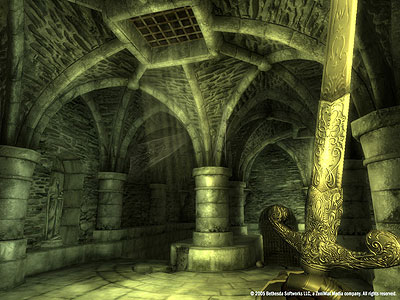Emergent, the company
For those who have never heard of Emergent, how would you describe the company and what are its products?
Today, we’re most famous for our Gamebryo Element – a game engine and toolset that’s been used in more than 200 games. Bethesda Softworks used Gamebryo to create Oblivion. So most people know us as a middleware company that makes a great engine.
What a lot of people don’t yet know is that we’re building tools that go far beyond Gamebryo. We believe the game development industry is facing some major challenges. The scale of games is growing exponentially, they’re growing more technically complex, and they require larger teams. This means they cost a lot more to make. At the same time, the inevitable online migration is now a major challenge for teams who have been focused on making boxed games for so long. Emergent Elements, our family of software tools, are designed to address many of those challenges. Metrics, Automation and Server management tools are all part of Emergent Elements — all integrated, all modular.
We always think it’s worthwhile to get to know the people involved – who are your key technical staff members and what are their experience in the gaming industry?
Our team is primarily composed of great engineers who have worked for some of the best game developers out there. Larry Mellon, our chief architect, spent many years at EA, where he worked on both the Sims and Sims 2.0. I was the Director of Online Operations at Ubi.com, VP of Development at Turbine, Director of Development for Hasbro, and Director of Engineering for Disney Online. And while he isn’t a member of our “technical staff,” our CEO Geoff Selzer managed one of Disney’s most successful interactive studios, and brings a solid games background to our company leadership.
I could go on, but you get the picture. Our roots are in games.
Given the geeky proclivities of the Beyond3D audience, let us take a look at one of these products in particular: the Gamebryo Element engine. This engine is not as widely known as Epic or id’s engines. This is why we’d like you to tell us more about it (practical now, isn’t it?).
First, I’d like to address the issue of our not being as widely known as Epic or id. We’re certainly not as well known among game consumers, but in the game development community I think we’re just as well known
Here’s the thing about Gamebryo: this is the most flexible engine you’re going to find on the market, period. Developers have used Gamebryo to make games that don’t have anything in common except for stunning graphics. This is not an engine for making only FPS games. The team at Bethesda did amazing things with Gamebryo to create their stunning RPG title, Oblivion, adding some of their own tools, using the ones we had, and so on. Then you have a company like Firaxis, which has used Gamebryo for their most important strategy games — Civ IV, Pirates!, and so on. We can’t wait to see what some of our newest customers like Buena Vista Games and Trion are going to be able to do with Gamebryo.
In fact, I think this goes back to the visibility issue. Games created with our engine each look unique, owing to Gamebryo’s inherent flexibility. There isn’t a “Gamebryo look” as there is with some of our competitors’ engines.
How would you compare it to the other engine solutions available on the market? Simply put, what is the competitive advantage of Gamebryo compared to the other choices?
Here’s what our customers tell us. They’re routinely surprised at how powerful our run-time engine is—it’s right up there with any engine on the market. We’re also getting a lot of attention these days for Gamebryo’s prowess with next-gen development. Oblivion on the 360 clearly showed that, but now with our new Floodgate technology, which is designed from the ground up with multiple processors in mind, we’re seeing some incredible things from our Gamebryo PS3 suite.
In the end, though, it always comes down to flexibility. Developers love that they can do so much with Gamebryo – it fits seamlessly into any production pipeline. You can add on to it, or choose to use only certain features… this is extremely powerful for those creative teams who are making games that are a bit out of the ordinary.


